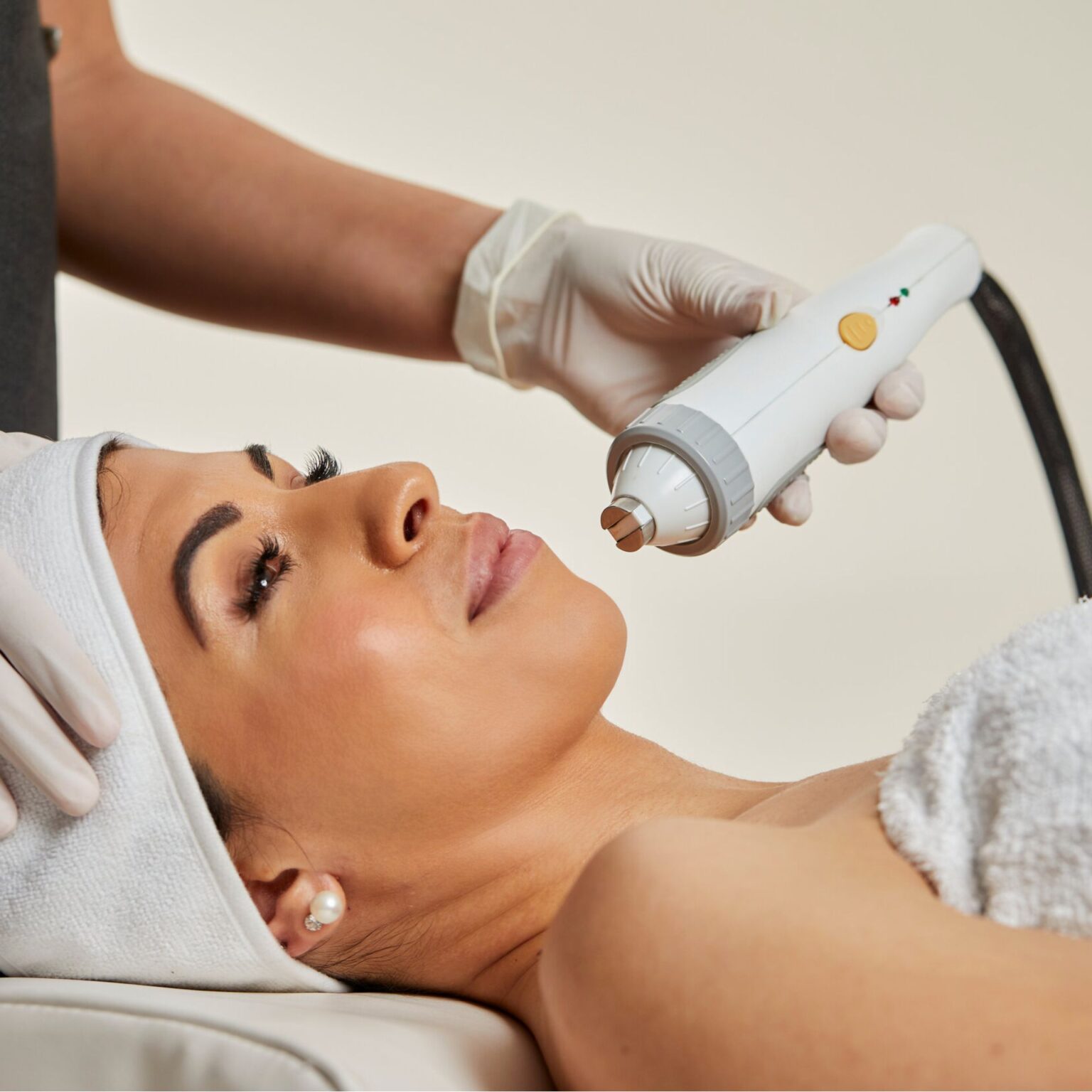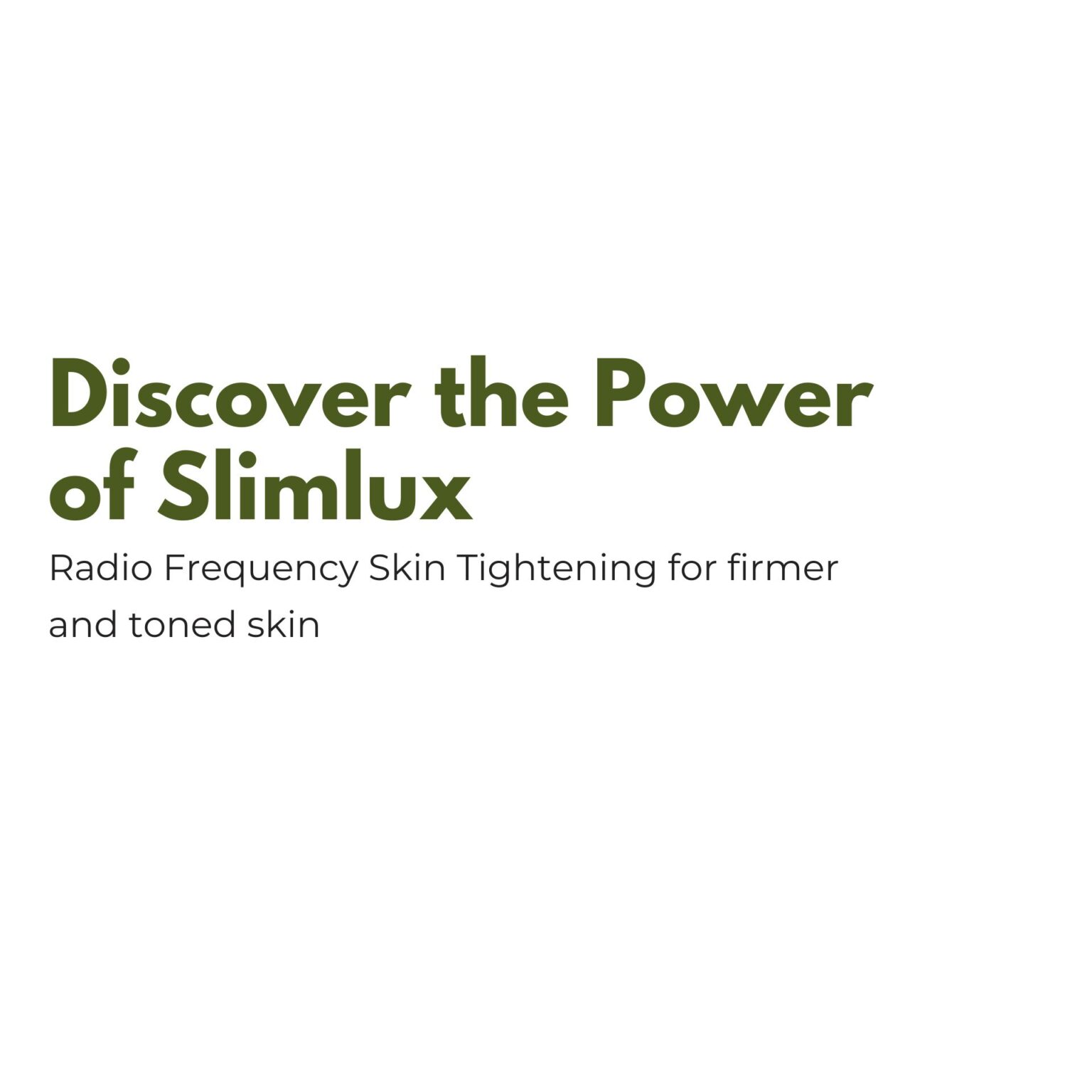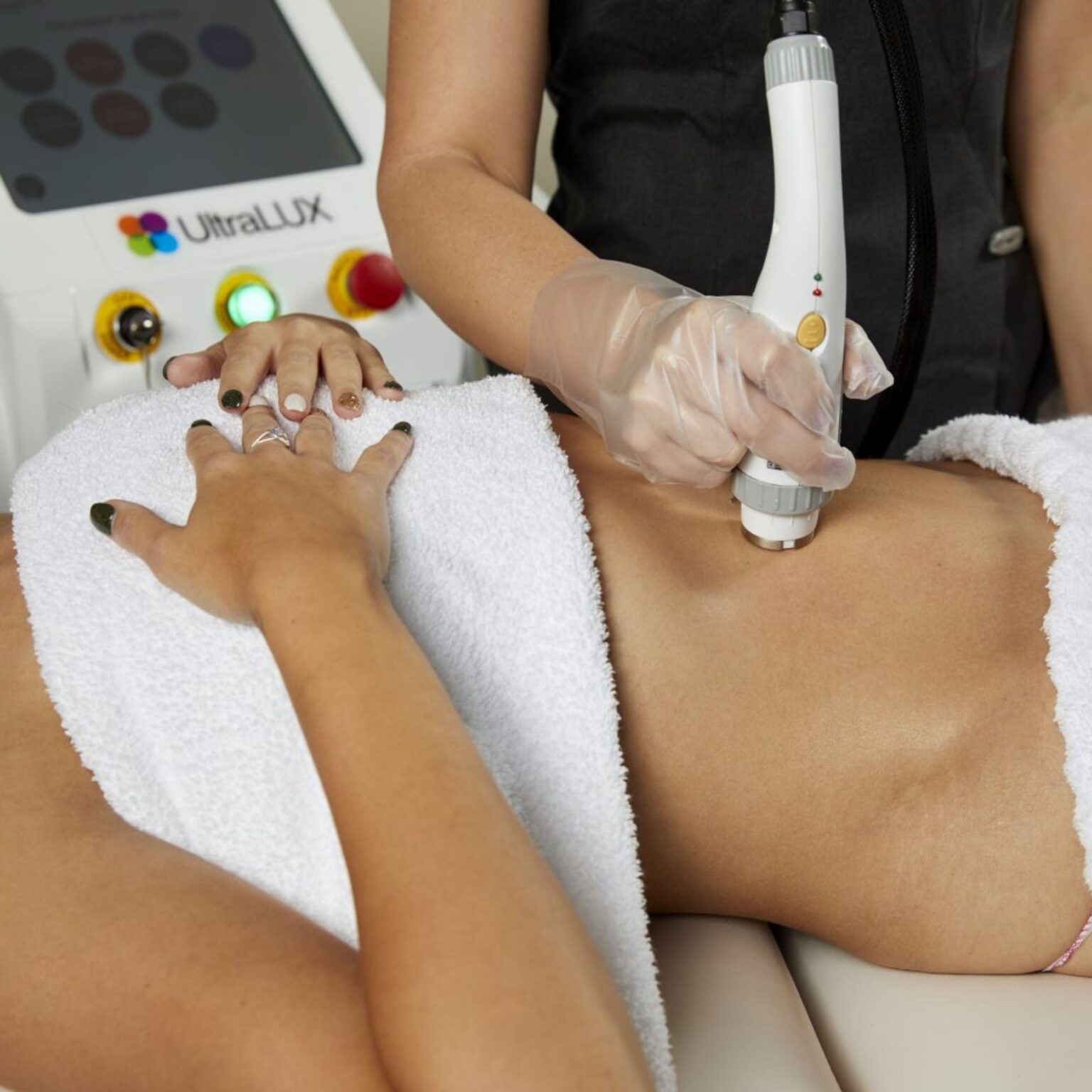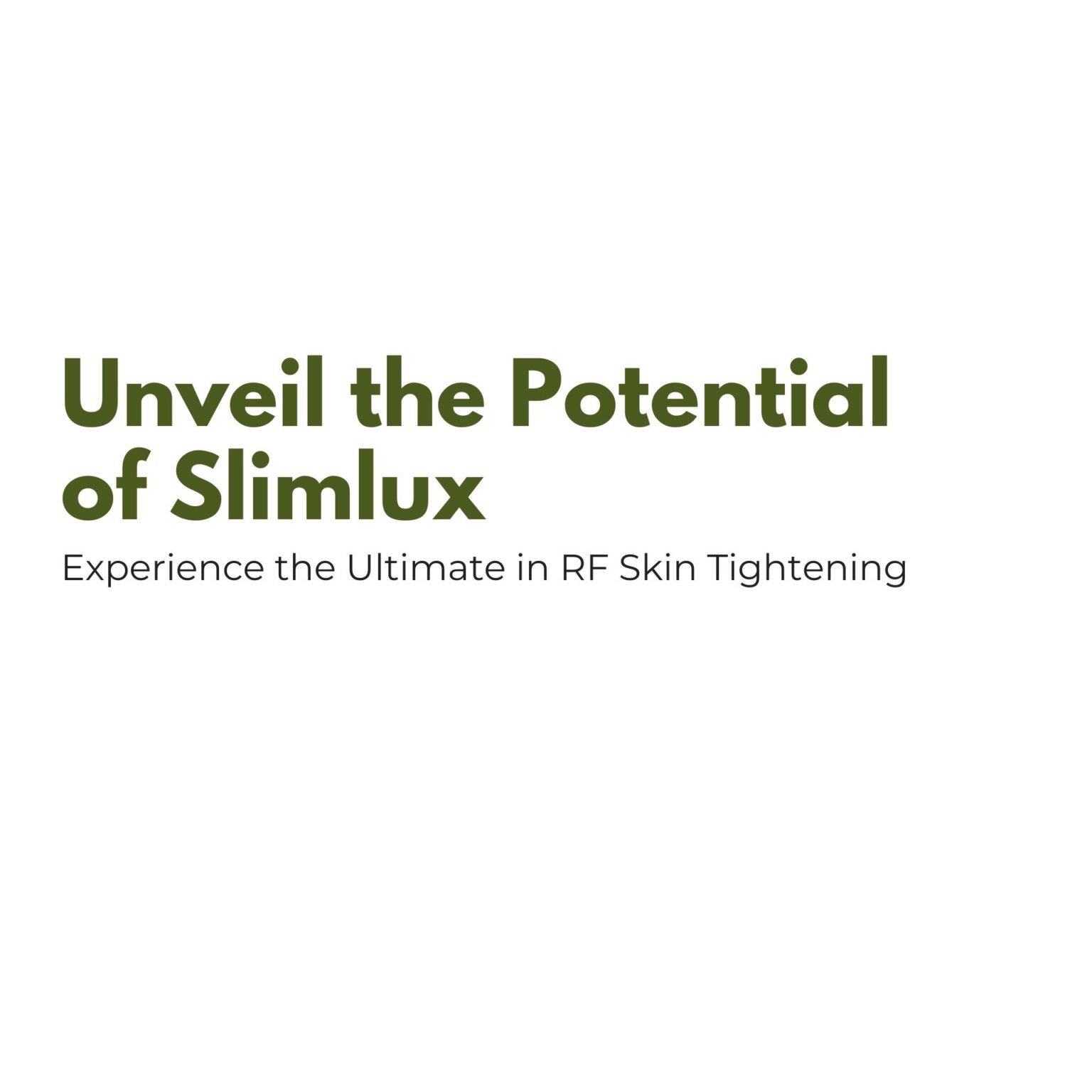



Radiofrequency therapy technology has stood out as one of the most effective and versatile techniques in the treatment of skin laxity. It’s an oldie but a goodie, first used in 2002 for wrinkle reduction and improved skin elasticity that uses radiofrequency (RF) energy to heat the skin. The heat stimulates collagen production, which helps to tighten the skin and improve its appearance. During the procedure, a device delivers RF energy into the deeper layers of the skin, causing a controlled injury that triggers the body’s natural healing response. This, in turn, leads to collagen remodeling and skin tightening over time.
Radiofrequency skin tightening is generally suitable for individuals who are experiencing mild to moderate skin laxity or sagging, particularly in areas such as the face, neck, abdomen, arms, or thighs. It can be beneficial for people who are seeking non-invasive or minimally invasive procedures to improve the appearance of their skin without undergoing surgery.
1. Pregnancy: RF energy may not be safe for pregnant individuals, so it’s generally not recommended during pregnancy.
2. Active skin infections or lesions: Treating areas with active infections or lesions can potentially spread the infection or worsen the condition. It’s essential to wait until the skin has healed before undergoing RF treatment.
3. Implanted electronic devices: People with implanted electronic devices such as pacemakers or defibrillators may need to avoid RF treatments, as the energy could potentially interfere with the function of these devices.
4. Metal implants or fillings in the treatment area: Metal implants or fillings in the treatment area can heat up during RF treatment, potentially causing discomfort or injury. It’s essential to discuss any metal implants or fillings with your healthcare provider before undergoing RF skin tightening.
5. History of keloid scarring: Individuals with a history of keloid scarring may be at a higher risk of developing excessive scarring or skin reactions following RF treatment.
6. Certain medical conditions: Individuals with certain medical conditions, such as autoimmune disorders, may need to avoid RF skin tightening or use caution due to potential risks or complications.
The RF device emits radiofrequency energy, which penetrates the skin and heats the dermal layer of the skin without destroying the epidermis. The heat generated by the RF energy causes controlled damage to the collagen fibers in the skin.
In response to the heat, the body’s natural healing processes are activated. Fibroblasts, which are cells responsible for producing collagen, are stimulated to produce new collagen fibers. Additionally, existing collagen fibers undergo a process called denaturation and remodeling, leading to tighter and firmer skin.
Over time, as the new collagen fibers form and the existing ones remodel, the skin becomes tighter and smoother. This helps to reduce the appearance of wrinkles, fine lines, and sagging skin.
RF skin tightening is performed with a device that allows for precise control of the depth and intensity of the RF energy, ensuring that the treatment targets the appropriate layers of the skin while minimizing the risk of damage to surrounding tissues.
The sensation experienced during radiofrequency (RF) skin tightening can vary from person to person and depends on factors such as individual pain tolerance, the specific RF device used, and the settings chosen by the treating practitioner. Many people describe the sensation during RF skin tightening as comfortable and tolerable.
During the treatment, you will feel warmth or heat as the RF energy is delivered to the skin. This sensation is typically mild and may be compared to the feeling of a warm massage or a hot stone treatment. Some individuals may experience a slight tingling or prickling sensation, but it is generally not painful.
The intensity of the RF energy will be adjusted based on your comfort level and the treatment area.
After the treatment, temporary redness or mild swelling in the treated area may be experienced, looking a little similar to a sunburn. These side effects usually subside within a few hours to maximum a few days.
Overall, most people find RF skin tightening to be a relatively comfortable procedure, with minimal discomfort during and after the treatment.
Pre-care
Avoid excessive sun exposure in the week leading up to your RF treatment. Sun damage can increase the risk of complications and interfere with the effectiveness of the treatment.
2. Avoid using certain products or ingredients that could potentially irritate the skin or interfere with the treatment. These include harsh exfoliants containing alpha hydroxy acids (AHAs), beta hydroxy acids (BHAs), or retinoids. Products containing strong acids, such as glycolic acid or salicylic acid, as these ingredients can make the skin more susceptible to irritation and may increase the risk of adverse reactions during treatment.
If you use prescription-strength retinoid creams or gels for conditions like acne or anti-aging, it’s advisable to discontinue use in the days leading up to your RF treatment. Retinoids can increase skin sensitivity and may cause excessive irritation or discomfort during RF treatment.
Products containing benzoyl peroxide, commonly used to treat acne, should be avoided before RF skin tightening. Benzoyl peroxide can be drying and irritating to the skin, making it more susceptible to discomfort during treatment.
Avoid using harsh cleansers or soaps that strip the skin of its natural oils before RF skin tightening. Opt for gentle, non-abrasive cleansers that won’t overly dry or irritate the skin.
Drink plenty of water in the days leading up to your RF treatment to keep your skin hydrated and in optimal condition.
Post-care
Use a gentle, non-abrasive cleanser to cleanse your skin twice daily (morning and evening).
Apply a hydrating moisturizer to your skin immediately after cleansing and throughout the day as needed.
Apply a broad-spectrum sunscreen every morning, even if you don’t plan on spending extended time outdoors.
Avoid using harsh exfoliants, strong acids, and prescription-strength retinoids for at least one week after RF skin tightening. These products can increase skin sensitivity and irritation, which may interfere with the healing process.
Continue to drink plenty of water to keep your skin hydrated from the inside out. Proper hydration supports the skin’s natural healing process and helps maintain its elasticity and overall health.
The procedure is non-invasive or minimally invasive, depending on the specific device used, and it usually requires little to no downtime. The effectiveness of the treatment can vary depending on factors such as skin type, age, and the severity of the skin laxity.
Multiple sessions are needed to achieve optimal results. Typically a course of 10 treatments on a weekly basis is required to see improved outcomes. Results may not be immediately apparent, and it may take several weeks to see the full effects of the treatment as collagen production increases and the skin tightens.
Face 10 sessions $750
Abdomen 10 sessions $500
Elevate your results:
Add on Skin Needling for optimal results
Not sure which one to get? Contact Us
